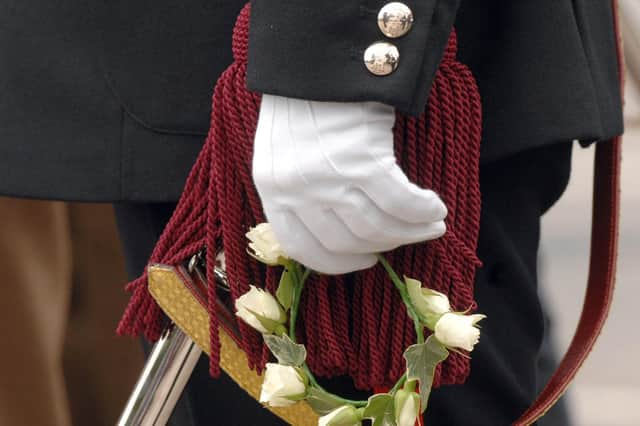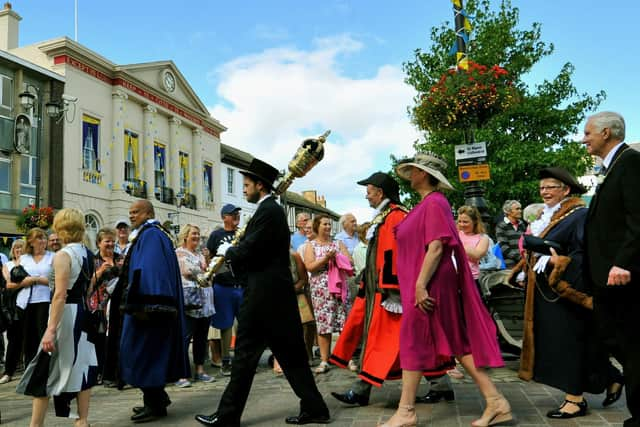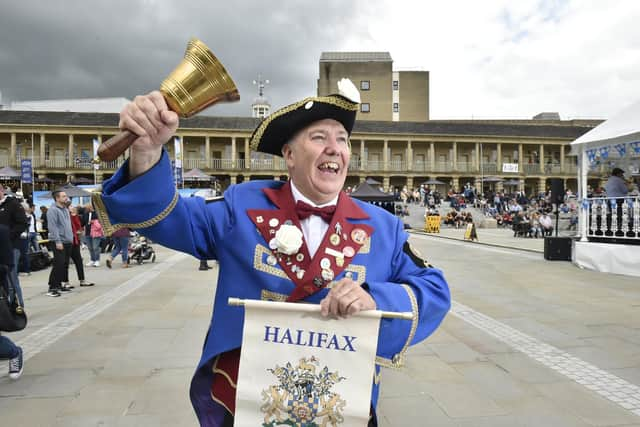The history of Yorkshire Day and the significance of August 1


They are a rebellious lot in Beverley. It was back in 1975 that the Yorkshire Riding Society unfurled its banners, and first proclaimed Yorkshire Day as a “protest movement against the local government re-organisations”. The year before, the map of the ancient Ridings of the county had been ripped asunder – much to the disgust and against the will of many thousands of Yorkshire folk, both at home and around the world – and a whole new structure was imposed.
It took a full decade before councils across Yorkshire finally agreed on an “Official Yorkshire Day Civic Celebration”. The first was held in York, and since then it has rotated across the region. Traditionally, Yorkshire’s Lord Mayors, mayors, civic leaders and other public figures all gather in the host town for a breakfast reception, then they proceed to the local church, minster or cathedral for a thanksgiving service. After that come the parades, followed by a formal lunch.
Advertisement
Hide AdAdvertisement
Hide AdThe location for Yorkshire Day 2022 is Keighley. So where might it be in 2023? “Ah”, says Geoff Walsh, the deputy chair of the Yorkshire Society. “That is a secret – until the day itself, which is when we will be revealing the location for next year’s hosts.” The society is a companionable mix of ordinary citizens and corporate members who represent various Yorkshire businesses and organisations.


The Town Mayor of Keighley, Coun Keith Maunsell, is really looking forward to the big day. “Here in Keighley, we celebrate all that is Yorkshire annually, and to host the day on behalf of the county is amazing. Keighley is a truly diverse community with lots to offer, and we look forward to showcasing the town and its wonderful community at its absolute best.”
Outsiders have been rather more cynical (and rather rude) about the significance of the celebration. One journalist observed (in the editorial column of The Times, back in 1991): “Today is Yorkshire Day. Not many people know that, as a very non-Yorkshire person likes to say, and probably not many Yorkshiremen either know or care. It is almost as artificial as Father’s Day, which as all thrifty Northerners know, was created to sell more greetings cards.”
“That seems to me to be more than a little curmudgeonly,” says Walsh. “In in the time that he – or she – wrote that, Yorkshire Day has gone from strength to strength. Not just in the civic side of things, but in the fact that, as you travel around the county, more and more people are flying the Yorkshire flag, and with a great deal of pride.
Advertisement
Hide AdAdvertisement
Hide Ad“The sense of community spirit has grown and grown, and it really is a time when neighbours can take the opportunity, as so many do, to pass a cup of tea over the fence, enjoy a piece of parkin or a slice of cake, and maybe a sliver of cheese, and enjoy everything that is Yorkshire. Not just on this special day but throughout the year”.


Walsh, who was Cheshire born and raised, arrived in Yorkshire nearly 20 years ago, settling in Pontefract. “Some people have the luck to pass through Yorkshire, and to enjoy it as they go. Some have the sense to stop, to stay and to put down roots. I am one of the latter, and I quickly became very aware of the unique ‘sense of place’ that this territory has.”
He is clear about the aims of the Yorkshire Society, and of Yorkshire Day – “to promote the diversity of the county, and to endorse and to celebrate everything that is good about Yorkshire. It’s such a great opportunity to show the sense of pride that we have in Yorkshire itself. It’s such a special place to live and to grow up in”. The society’s president is Lord St Oswald, whose ancestral seat is Nostell Priory, near Wakefield.
So why is August 1 celebrated as Yorkshire Day? The fact is that two remarkable events took place on that day in British history in which Yorkshire played a pivotal part.
Advertisement
Hide AdAdvertisement
Hide AdOne was the Battle of Minden, a decisive action in the Seven Years War. It is now largely forgotten – except by military historians, but at the time it was an event which, with several other victories around the world from India to the West Indies and Canada, marked Britain’s takeover from France of being the leading global power. The year was 1759, and central Europe was growing weary of the toing and froing of the armies of France on one side, and Prussia, Hanover and Prussia on the other.


Why Hanover? Because it was ruled over by the British King, George II. It remained allied to the British crown until Victoria became Queen, since the laws of the tiny state forbade women to become its monarch. France was bullying all the states on its eastern borders, and many of them were fighting back. Minden was to be the turning point, where the allied forces of just 72,000 men met a hugely superior Gallic army of well over 100,000.
On the allied side, there were no less than six British regiments, and one of them was the 51st Foot, which had strong Yorkshire links and which, not so long after, was to become the King’s Own Yorkshire Light Infantry, a name which it was to proudly carry for centuries to come. Its regimental museum is in a fine new building Doncaster, which attracts thousands of visitors every year. After amalgamation in 2007, the regiment became The Rifles.
The British troops of the allies, on their way to the field of conflict, passed through several gardens belonging to local communities, and, to boost morale, the men all picked roses which were appropriate to their regions. The Royal Regiment of Artillery picked red roses. Others picked yellow. The Yorkshire picked white (what else?). After a long and particularly vicious encounter, the allies won, and Minden Day was established.
Advertisement
Hide AdAdvertisement
Hide AdThe Yorkshire Regiment rose of today is grown by RV Roger Ltd, which is based in Pickering, and it took a full four years for it to be cultivated and approved. It is a hybrid tea rose, with a very tight bud and a very faint fragrance – presumably because no traditionally bluff Yorkshireman would want to be caught walking about in a heady fug of overpowering scent.
The Corps of Drums from Catterick Garrison will – it is hoped – be wearing the white rose when it parade in Keighley on Yorkshire Day. Wing Commander Alan Bartlett, of the Yorkshire Army Museum in York, regrets that the old tradition of wearing the white rose as part of the Army’s involvement on Yorkshire Day has, in part, lost a popular observance. “I would dearly love it to return”, he says. “It is definitely something which we will have to address, and build on”
It was in 1881 that the East Yorkshire Regiment – along with many other infantry regiments – were part of sweeping army reforms. They were all told to use a regimental badge that had significance to their history, or to choose one appropriate to their county. The East Yorks chose the white rose, encompassed by a wreath, all on an eight-pointed Brunswick (Hanoverian) star. The regimental badge is not the same as the cap badge, which today has the five-petalled white rose as its centre, the royal crown over it at the top, and the word “Yorkshire” on a banner underneath.
And the other major event associated with August 1? That is linked to one of the county’s most dedicated and stubborn sons, Hull-born William Wilberforce. His dedication to the abolition of slavery throughout the British Empire was tireless, and he campaigned so hard that it ultimately cost him his health.
Advertisement
Hide AdAdvertisement
Hide AdHe heard, in the late July of 1833, that the Government were to pass the Bill for the Abolition of Slavery, and that he had been saluted in Parliament for his campaigning. He obviously felt that his battle was won, for, three days later, on July 29, he died. It was on August 1 that the Bill received its Royal Assent.
Wilberforce and his campaigners, like the soldiers of Minden, had triumphed in their long campaign. Wilberforce has many memorials – one is in Westminster Abbey, but his birthplace in Hull is now a much-visited attraction, and a 102ft-high Greek Doric column, topped by a statue of the great man, towers over the city. The University of Hull has also established the Wilberforce Institute for the Study of Slavery and Emancipation. He was (and continues to be) the prototype for scores of humanitarian campaigns.
Those men who changed the map of Europe, and a man who changed the thinking of the world. Yorkshire Day has some roots of which we can all be very proud.